
What to do in Guanajuato – Complete Travel Guide
Last Updated on May 8, 2021
Guanajuato, a UNESCO World Heritage Site, is a magical city one should visit in Mexico. This ancient mining town is filled with small paved streets and underground roads winding up and done. Spending a few days there, exploring baroque churches and museums, sampling some great food and enjoying the eclectic vibe will be the highlight of your trip to Mexico. Read on to learn about what to do while there, the day trips you can take from Guanajuato and the best places to stay at.
Disclaimer: This post contains affiliate links, which means that if you click on any links and make a purchase, I’ll get a small commission, at no cost to you.
What to do in Guanajuato

Visit the historic center
A walking tour of Guanajuato’s Historic Center is a must, getting lost in the city’s small streets and tunnels, discovering colonial houses and ancient palaces. Guanajuato is a place rich in history and holds an important place in Mexico Independence History. It’s also a paradise for foodies, from French bread to Vietnamese Pho, you’ll find a lot of restaurants from all over the world. For traditional Mexican food head to the Hidalgo Market, where you can also shop for handicrafts.
Among the main landmarks, you’ll find the Juarez theater, the University, many churches, and ancient edifices turned into museums. Don’t forget to take the funicular to visit the Pipila Monuments and get a panoramic view of the historic center. Don’t either miss Guanajuato’s most iconic street: the Callejon del Beso (the Kiss Alley).

Here are other places to visit in Guanajuato:
Garden and squares:
- Jardin de la Union
- Plaza de la Paz
- Plaza del Baratillo
- Plaza de San Fernando
Churches:
- Our Lady of Guanajuato Basilica
- San Fransisco Church
- San Diego Church
- Temple of the Jesuit Order (Templo de la Compania de Jesus)

Visit a mine
Guanajuato is known for its mining past. Several mines in the area have been adapted to tourism and can now be visited. Visiting one is enough, among the most popular you’ll find:
- San Ramon Mine – a guided tour will take you 200 ft (60 meters) underground and will explain about Guanajuato mining history. They also have a small museum, and the hacienda there often hosts events.
- Bocamina de San Cayetano – right next to San Ramon mine, you’ll also find a small museum and retired miners organize visits of the mine shaft.
- El Nopal Mine – smaller mine where university students give you the tour, you get a lot of information on the mine and mining in general.
Near San Ramon and San Cayetano, you can also visit the Museo de Sitio Mina Valenciana. A museum retracing the city’s mining past. You can easily get there with public transportation, ask around at the Hidalgo market or stop a bus heading north on Avenida Hidalgo (ask the driver if he’s heading to Valenciana). If you go there, make sure to make a stop at Valenciana Church.
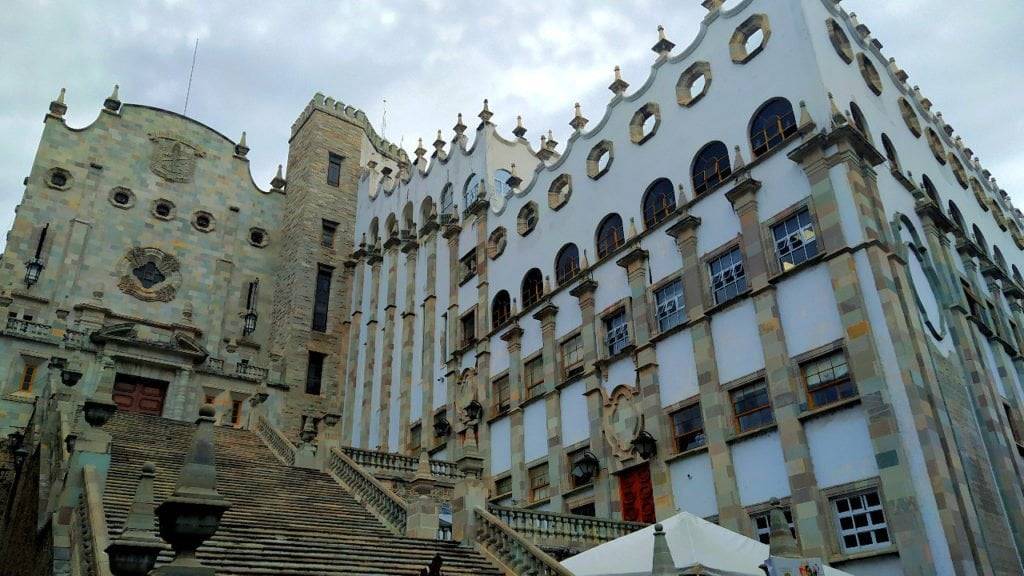
Visit a Hacienda
Ex-Hacienda del Cochero
The Cochero Hacienda is also known as the Torture Museum. This ancient hacienda looks peaceful enough from outside but hides a dark past. Inside, a guided tour will take you through dungeons and torture chambers dating back from the inquisition period.
The Ex-Hacienda del Cochero is open from 10 AM to 7 PM every day. The entrance fee is 45 pesos.
Ex-Hacienda San Gabriel de Barrera
The Hacienda San Gabriel de Barrera was built in the 17th century during the mining boom in the area. This luxurious hacienda is surrounded by beautiful gardens. Inside, the original furniture has been kept, corresponding to two periods: downstairs the style is from the Viceregal Spanish era and upstairs from the Maximilian period, with more French influences.
The house is open every day from 9 AM to 6 PM. The entrance is 30 pesos.
Visit Guanajuato’s Museums
As you can see there are quite a few museums in Guanajuato, most of them are small, so you can easily fit a couple into your schedule. All of them are located within the historic center (except the Casa de Tia Aura) and you can include them into your itinerary.
Casa de Diego Riviera
This museum is a must in Guanajuato. Originally, this house was were Diego Riviera grew up, some parts of it have been recreated, so you see the furniture and arrangement of the rooms. Other parts have been turned into a museum featuring pieces of art from Diego Riviera and tempory exhibits from Mexican and international artists.
The museum is open from Tuesday to Sunday, from 10 AM to 7 PM (3 PM on Sundays). The entrance fee is 25 pesos.
Museo de las Momias

Probably one of the best things to do in Guanajuato, visiting the Mummies Museum is a spooky experience. Around 100 naturally mummified corpses are found in this museum. It all started in the 19th century when the city introduced a tax for perpetual burial. When it wasn’t paid, they exhumed the bodies and stored them in a building nearby. People started to pay to visit the building where the corpses were and it became a tourist attraction. It was turned officially into a museum in 1969.
The museum is open every day from 9 AM to 6 PM (6:30 on weekends). The entrance fee is 85 pesos.
Alhondiga de Granaditas – Regional Museum of Guanajuato

The Regional Museum of Guanajuato retraces the history of Mexico and Guanajuato and is set in a historic building, the ancient public grain storehouse. The exhibits, as well as the building’s architecture, are worth a look. From the prehispanic era all the way to the Independence, you’ll learn everything about this region’s past.
The building’s history is also worth discovering. Built between 1798 and 1808 as a grain storehouse, it turned into a fortress only a few years later when Spanish troops took shelter there. They were later killed by independentists led by Hidalgo. The building became alternatively an armory, a school, a prison and then finally a museum.
The museum is open from Tuesday to Sunday, from 10 AM to 5.30 PM (2:30 PM on Sundays). The entrance fee is 75 pesos (free on Sundays).
Don Quixote Iconographic Museum
Cultural and art center, this museum features pieces of art from all over the world with one common theme: Don Quixote de la Mancha. An interesting museum worth a quick look. Guanajuato is also known as the Cervantes Capital of America. Everything started in the 1950s’ with a college professor trying to democratize theater and bring it to the street, using mostly Cervantes’s work. Guanajuato started being known as a cultural town. Later Eulalio Ferres, a Spaniards living in Mexico whose life at been changed after reading Don Quixote, opened the Iconographic Museum, sharing with the town his private collection.
Open from Tuesday to Sunday from 9:30 AM to 7 PM (12 to 7 PM on Sundays). The entrance fee is 30 pesos.
Museo del Pueblo de Guanajuato
A small museum exhibiting historical and modern art. There are two parts, one with pieces of arts and handicrafts from the 17th to the 19th century. The other exhibits arts from Hermenegildo Bustos, a famous artist from Guanajuato.
The museum is open from Tuesday to Sunday, from 10 AM to 7 PM (3 PM on Sundays). The entrance fee is 25 pesos.
Museo Palacio de Los Poderes

Originally known as the San Clemente Marquesal Palace, built in 1753, the edifice was declared the headquarter for the judicial power and the Congress (among others) in 1831. It was partially destroyed in 1897 to be turned into the building we know now. It has been the main office of Guanajuato’s judicial, executive and legislative powers since then.
You can visit most of it. There are some parts where someone will be there to give explanations and others featuring small exhibits.
The palace is open from Tuesday to Sunday from 10 AM to 7 PM. The entrance fee is 25 pesos.
Museo Conde Rul

Right next to the Palacio de Los Poderes, you’ll find the ancient house of the Count of Rul. Built during the beginning of the 19th century, the house is considered as one of the best examples of the neoclassic style you’ll find in Mexico. Apart from the stunning architecture, the house features several art exhibits from contemporary artists.
The Museum is open from Tuesday to Sunday from 10 AM to 7 PM, closes at 3 PM on Sundays. The entrance fee is 25 pesos
Museo Ex-Convento Dieguino
This museum consists of the excavated remain of an ancient convent. Visiting it will allow you to understand the level-changes the city has known since its construction,
The convent is open every day from 10:30 AM to 6:30 PM.
Casa de Tía Aura
A bit outside of the city, Tia Aura House is a good place if you like to get spooked. This “museum” is set in an ancient colonial house, in every room, terrible legends and stories of past atrocities are told, accompanied by sound and light effects.
The house is open from 11 AM to 6 PM every day. The entrance fee is 35 pesos.
Guanajuato Walking Tour Itinerary
You can start and finish your tour at the Union Garden where you can visit the church, the theater, and the convent. From there take the funicular to the Pipila Monument. Once you get down, head to the Baratillo Plaza, visit the Jesuit Order Temple and the University. Continue on the street until you reach the Pueblo de Guanajuato Museum, then the Diego Riviera Museum. Make a detour to the San Fernando Plaza then visit the Alhondiga de Granaditas Museum. Pass by the market and head for the Callejon del Beso. After, go down the Benito Juarez Avenue, stopping by the Casa del Conde Rul and the Palacio de Los Poderes. Finally, head to the Paz Plaza where you can visit the Basilica.
You can also join a guided walking tour.

Day trips – What to do around Guanajuato
Nearby Pueblos Magicos
Mineral de Pozos
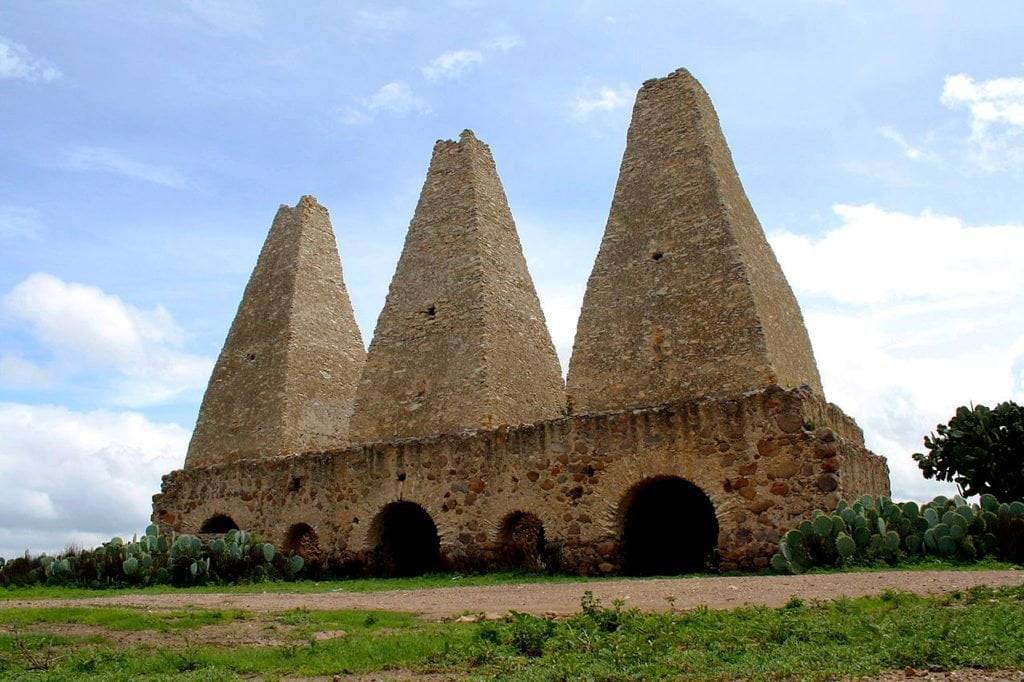
Mineral de Pozas is a ghost town, it used to count around 80,000 inhabitants during the mining boom, only 4,000 stayed after the revolution. The town is filled with haciendas in ruins and abandoned colonial houses. There, you can walk around the village and visit one of the nearby mines.
Dolores Hidalgo

Dolores Hidalgo is known for the important part it played during the war for independence. Visiting this town rich in history is a must-do while in Guanajuato. Here are the main places to see there:
- Wine Museum
- National Independence Museum
- Abasolo House
- Jimenez House
- Casa de Visitas
- Hidalgo House
- Parish of the Assumption
- Templo de la Tercera Orden
- Plaza Principal
On the outskirts, you can visit the Hacienda de la Erre and a vineyard (Cuna de Tierra or Santisima Trinidad).
Salvatierra
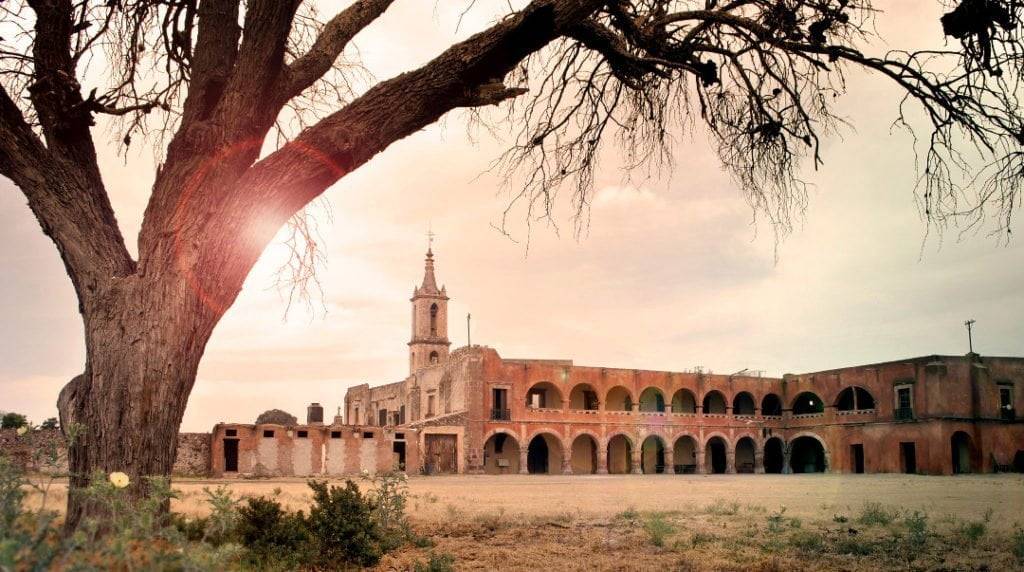
Founded in 1644 by the Spaniards, Salvatierra used to be an important religious center where several different orders settled. The village has been well preserved and walking through the paved street, you’ll see centuries-old churches, haciendas, and ancient houses. Here are a few places you shouldn’t miss:
- Plaza de Armas
- Virgen de la Luz Sanctuary
- San Francisco Temple and Convent
- Carmen Church
- Batanes Bridge
- Capuchins Convent-Fortress
Yuriria
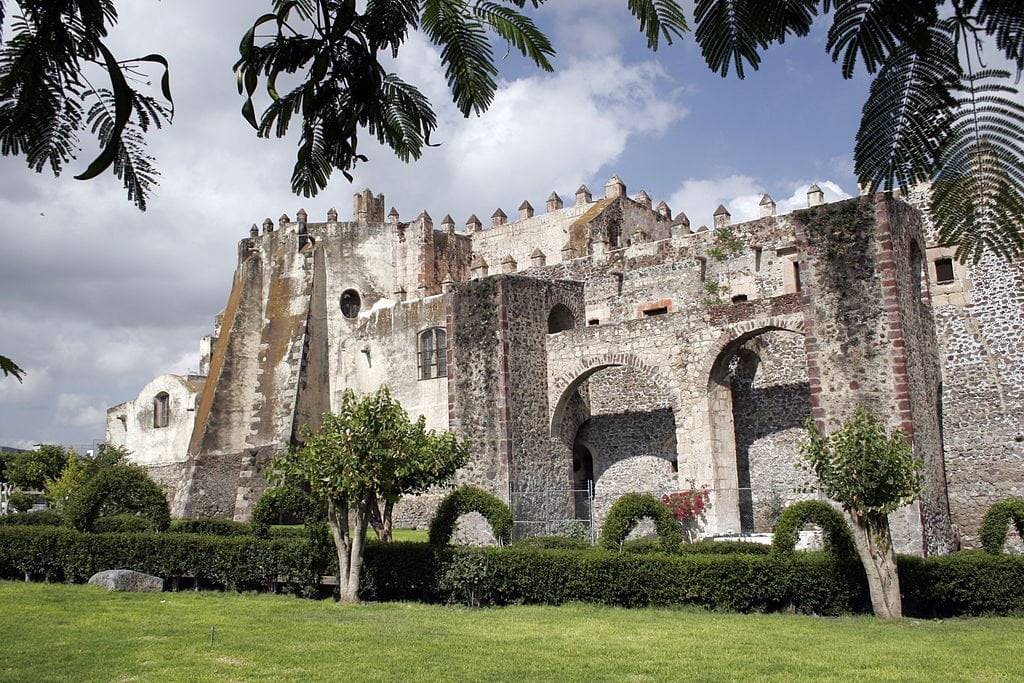
Yuriria is the perfect combination of natural sights and man-made landmarks. This beautiful Pueblo Magico is filled with ancient convents overlooking the first man-made lake in Latin America. Here are a few places you shouldn’t miss in Yurira:
- San Pablo Ex Convent and Temple
- Santa María Church
- Templo Expiatorio del Hospital
- Señor de la Salud Church
- Temple of the Immaculate Conception
- Señor de Esquipulas Church
- Señor de la Preciosa Sangre de Cristo Church
- Yuriria Lake
Jalpa de Canovas

Jalpa de Canovas is a small village surrounded by ancient haciendas and fertile lands. Stroll around the village and take a ride to admire the landscape. There you should visit:
- Señor de la Misericordia Church
- Nuestra Señora de Guadalupe Sanctuary
- Jalpa de Cánovas Hacienda
- Living & Spirit, a hotel-spa set in the Cañada de Negros Hacienda
Ruta de Los Conventos (Convents Route)
The Convents Route included some of the Pueblos Magicos listed above. The typical route goes this way:
- Ex Convento de la Compañia de Jesus, built in 1732 in Guanajuato;
- San Cayetano, built in 1788 in Valenciana;
- Ex Convent of San Agustin, built in 1642 in Salamanca;
- San Pablo de Yuririapundaro, founded in 1550 in Yuriria;
- Santa Maria de Gracia, build during the 17th and 18th century in Acambaro (they make a famous bread there);
- San Fransisco Convent, Cauchine Convent and Temple, Carmen Convent and Temple in Salvatierra;
- Temple and Convent of Carmen and San Agustin Conjunto in Celaya (famous for its cajeta).
The traditional tour finishes in San Miguel de Allende, but you won’t have time to visit everything in one day, so from Celaya, just head back to Guanajuato and keep San Miguel de Allende for the next day.
San Miguel de Allende
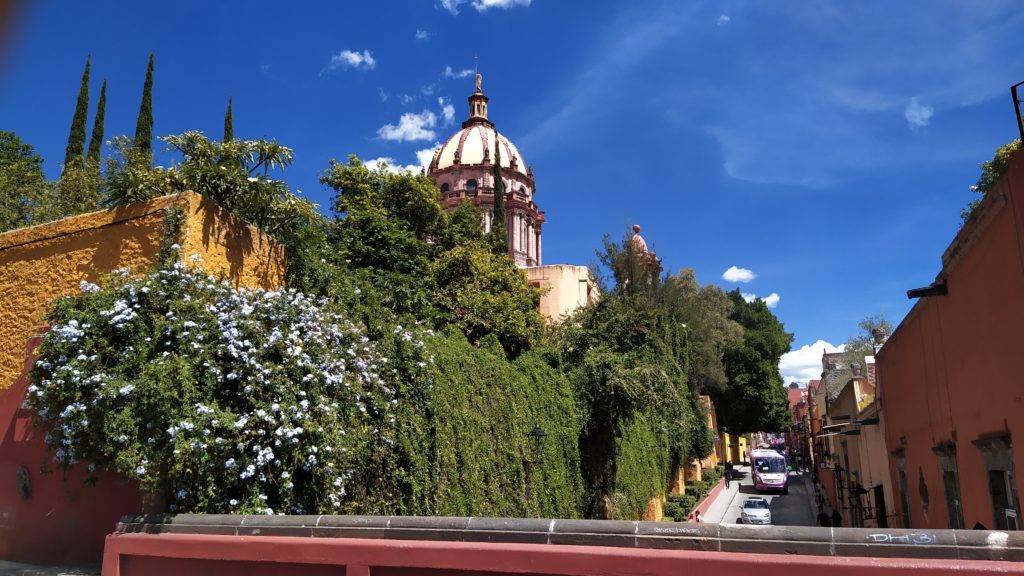
San Miguel de Allende is a must-visit town while you’re in Guanajuato. You can tour it in a day but you can also spend a night or two there. The city is a UNESCO World Heritage site and is totally different from Guanajuato.
Related article – Best things to do in San Miguel de Allende
Archaeological Sites
The state of Guanajuato is filled with small archaeological sites. Not as spectacular as other ruins in Mexico, they are still worth visiting if you have the time and are looking for day trip ideas from Guanajuato. You’ll need to rent a car or hire a driver for the day, most sites are hard to reach.
El Coporo

Located in the Ocampo Municipality, El Coporo was inhabited between 500 and 900 AD. The architecture, as well as the different artifacts found on the site, suggest the settlers come from what is known today as San Luis Potosi. Influences from Zacatecas and Jalisco were also found. Not much more is known about the site.
The site is open from Tuesday to Sunday, from 10 AM to 4 PM. The entrance fee is 39 pesos.
Cañada de la Virgen
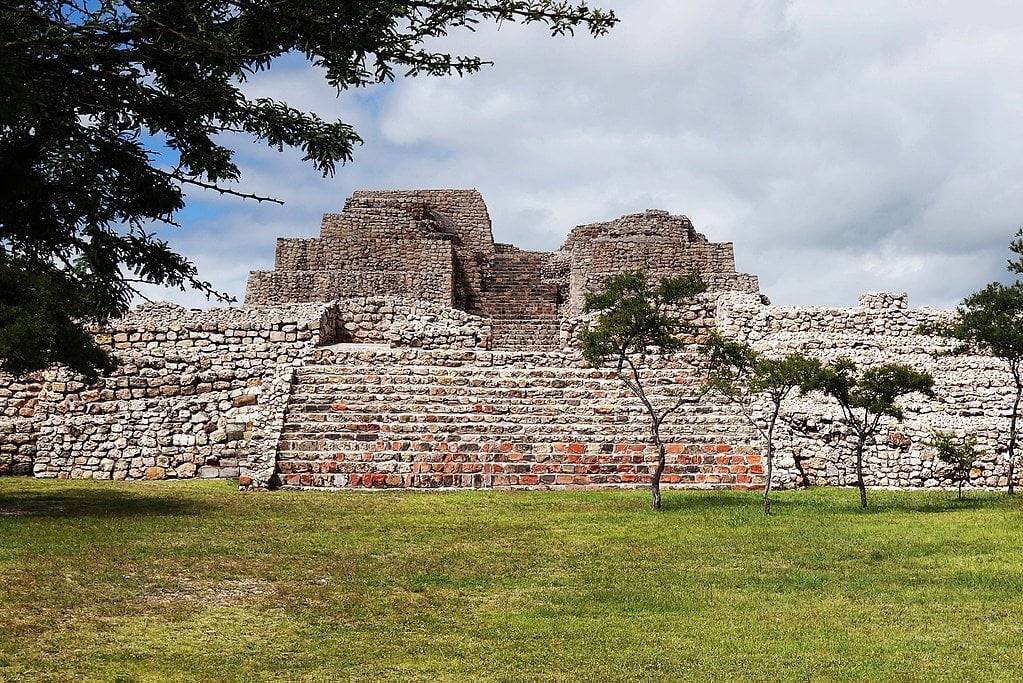
Located near San Miguel de Allende, this archaeological site used to be an astronomy center. Several pyramids have been well restored and the site is worth a look if you’re in the area.
The site is open from Tuesday to Sunday, from 10 AM to 4:30 PM. The entrance fee is 39 pesos. The tour lasts two hours and a half.
Plazuelas

Located in San Juan el Alto Plazuelas, Plazuelas is used to be a major city and is Guanajuato’s most important archaeological site. Occupied between 450 and 900 AD, the city was inhabited by several different ethnic groups. Several buildings have been excavated and well restored.
The site is open from Tuesday to Sunday, from 10 AM to 5 PM. The entrance fee is 39 pesos.
Peralta

Located in Abasolo Municipality, Peralta is a major archaeological from which little is known. Reaching its pinnacle between 300 and 750 AD, the city’s inhabitants practiced seasonal terraced agriculture and abandoned the site in 950. The Chichimecas, a semi-nomadic tribe, then moved in. Today, you can see several buildings and traces of the original city planing. There’s also a museum featuring several artifacts found in the region.
The site is open from Tuesday to Sunday, from 10 AM to 5 PM. The entrance fee is 39 pesos.
Where to stay in Guanajuato
The best area to stay in Guanajuato is, of course, the historic center. Here are a few options you can check out:
- Horla Hostal – Basic option for backpackers, it’s cheap, the house is nice, breakfast is included and the location is perfect. 9 USD for a bed in the dorm
- Casa de Pita – nice, affordable bed and breakfast in a traditional house, good breakfast included and great view from the terrace. Prices start at 40 USD.
- Casa del Rector Hotel Boutique y Arte – amazing boutique hotel, modern decoration blending in perfectly with the traditional house. 5-star service, outdoor swimming pool, restaurant
Related articles to help you plan your trip to Mexico:
- San Miguel de Allende Ultimate Travel Guide
- Best destinations to discover in Mexico
- Epic things to do in Queretaro
Like it? Save it for later:










